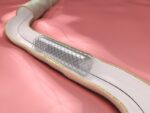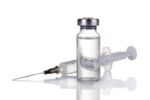Increasingly, the frequent performances of elective angioplasties are in hospitals that do not have a cardiac surgery team. The occurrence for the need of emergency surgery varies from 0.1 to 0.4% in the contemporary age. There is an ongoing debate on health policy about whether to perform elective coronary angioplasty at hospitals without cardiac surgery...
STREAM trial: It is time to check out facilitated angioplasty?
It is not clear so far whether pre-hospital fibrinolysis with early angiography could provide a clinical outcome similar to primary percutaneous coronary intervention (PCI) for acute myocardial infarction (AMI). This study included 1,892 patients who presented within three hours of symptom onset and who could not undergo primary angioplasty within the first hour. Patients were...
PARIS: Interruption of dual antiplatelet treatment can be safe depending on the clinical context and treatment time
The cessation of dual antiplatelet treatment increased the risk of post coronary intervention adverse events. It is unclear whether the risk varies through time or if it depends on the reason for the interruption or both. The PARIS (patterns of non-adherence to anti-platelet regimens in stented patients) register is a prospective, observational study in patients...
PCI vs. CABG in patients aged under 50 years
Original title: Comparison of 30-Day and 5-Year Outcomes of Percutaneous Coronary Intervention Versus Coronary Bypass Grafting in Patients Aged ≤50 Years. Reference: Fausto Biancari, et al. Am J Cardiology Article in Press. Coronary artery bypass grafting (CABG) is associated with better evolution than percutaneous coronary intervention (PCI), mainly due to left main and multiple vessels re...
Validation of the Bleeding Academic Research Consortium
Reference: Circulation. 2012; 125:1424–143 Abstract: For many years all efforts applied to the optimization of percutaneous coronary intervention (PCI) were aimed specifically at reducing ischemic events risk through the advent of: 1) new devices (medicated stents), reducing restenosis rates, revascularization and 2) development of new drugs with a potent anti-platelet or anticoagulant such as clopidogrel or,...
DES and programmed surgery: reality or myth
Original title: Drug-Eluting Stents versus Bare Metal Stents Prior to Noncardiac Surgery. Reference: Sripal Bangalore, et al. Catheterization and Cardiovascular Intervention 2015;85:533-41 Drug eluting stents (DES) have proved beneficial compared to bare metal stents (BMS), but the need to program a surgical procedure after a percutaneous coronary intervention (PCI) has limited its use. This study analyzed patients receiving...
Shall we change our daily practice to introduce complete revascularization during AMI? Another study contributes for preventive PCI in AMI.
Original title: Randomized Trial of Complete Versus Lesion-Only Revascularization in Patients Undergoing Primary Percutaneous Coronary Intervention for STEMI and Multivessel Disease: The CvLPRIT Trial. Reference: Gershlick AH et al. J Am Coll Cardiol. 2015 Mar 17;65(10):963-72. Recent studies such as the PRAMI and the one we summarize here show complete revascularization of AMI patients before discharge...
Chronic total occlusions, a true challenge
Original title: Procedural Outcomes of Chronic Total Occlusion Percutaneous Coronary Intervention. A Report From the NCDR (National Cardiovascular Data Registry). Reference: Emanuel S. Brilakis, et al. JACC Cardiovascular Intervention 2015;8:245-53 Chronic total occlusions (CTO) are present in 20% to 50% of pathological coronary angiograms but, even though this percentage has increased in the past years, PCI is performed...
Safety and efficacy of DES in saphenous vein bypass graft PCI
Original title: Safety and effectiveness of drug-eluting versus bare-metal stents in saphenous vein bypass graft percutaneous coronary interventions: insights from the Veterans Affairs CART program. Reference: Aggarwal V et al. J Am Coll Cardiol. 2014;64:1825-1836. This study retrospectively evaluated 2471 receiving after saphenous vein graft (SVG) PCI between October and September 2011. Outcomes were compared using propensity...
Net clinical benefit of bivalirudin in STEMI patients
Original title: Bivalirudin Versus Heparin With or Without Glycoprotein IIb/IIIa Inhibitors in Patients With STEMI Undergoing Primary Percutaneous Coronary Intervention: Pooled Patient-Level Analysis From the HORIZONS-AMI and EUROMAX Trials. Reference: Stone GW et al. J Am CollCardiol. 2015 Jan 6;65(1):27-38. The HORIZONS-AMI (Harmonizing Outcomes with RevasculariZatiON and Stents in Acute Myocardial Infarction) that included 3602 STEMI patients undergoing...








